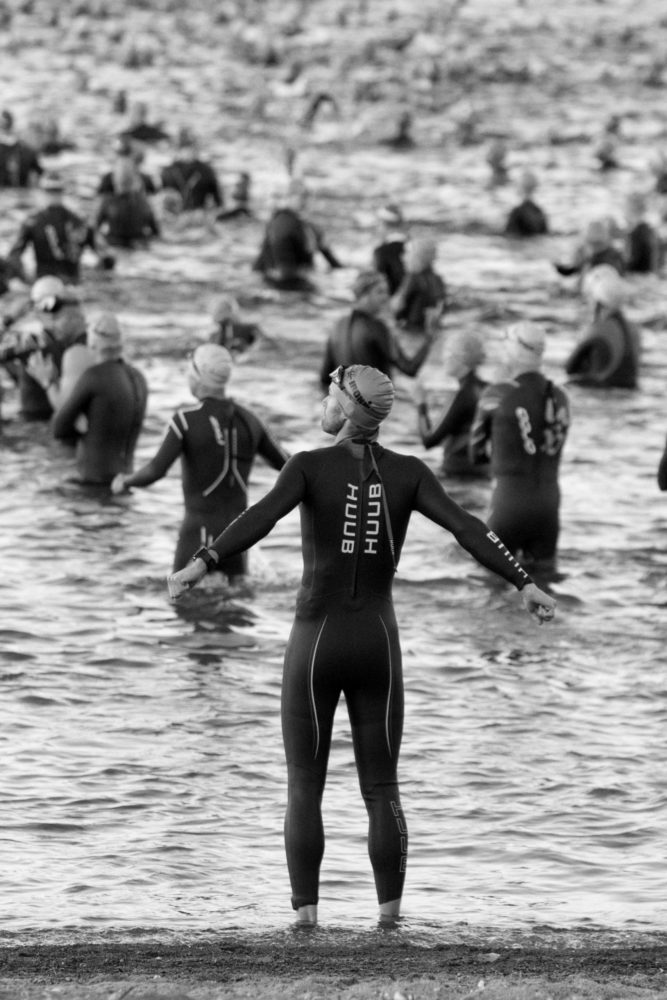Setting Your Training Zones
The gold standard for identifying your aerobic and anaerobic thresholds is laboratory testing, using blood lactate analysis to identify precise metabolic points. However, lab tests can be costly and are not accessible to everyone. Fortunately, several reliable field methods have been developed by endurance experts such as Phil Maffetone, Joel Friel, and Matt Dixon. Below is an overview of these methods, including when and how to use them.
1. Phil Maffetone Method
This is a simple, low-stress approach ideal for beginners or athletes building a base. Maffetone’s formula focuses on aerobic development and injury prevention.
Formula:
180 – your age
- Add 5 if you’ve been training consistently and injury-free
- Subtract 5 if you’re recovering from injury or illness
Example:
For a 40-year-old with no recent injuries:
180 – 40 + 5 = 145 bpm → This is your aerobic threshold, ideal for Zone 2 training.
To estimate your anaerobic threshold, you can roughly add 20 bpm to your aerobic threshold (e.g., 145 + 20 = 165 bpm). While this isn’t part of Maffetone’s original method, I’ve found it helpful as a general guide.
When to use this method:
- During off-season or early base-building
- When recovering from injury or burnout
- If you’re new to structured training
This approach requires patience, but it’s extremely effective for developing a strong aerobic engine safely.
2. Joel Friel Method
Joel Friel, author of The Triathlete’s Training Bible, uses a more performance-based approach to determine your anaerobic threshold using a 30-minute time trial.
Steps:
- Warm up thoroughly.
- Perform a solo, 30-minute time trial (run, bike, or swim).
- Record your average heart rate for the final 20 minutes of the effort.
→ This value is your anaerobic threshold heart rate.
From this point, platforms like TrainingPeaks or Garmin can generate your heart rate zones automatically.
When to use this method:
- If you’re an intermediate to advanced athlete
- If you can hold a steady pace and push yourself effectively
- If you’re looking to fine-tune your training zones
Caution:
This test can be taxing and isn’t recommended after an injury or inconsistent training period. Inexperienced athletes may struggle to pace the effort, which can lead to inaccurate data.
3. Matt Dixon Method
Matt Dixon, founder of Purple Patch Fitness, offers a more intuitive, subjective approach. Rather than relying solely on data, he encourages athletes to listen to their body and adjust training based on perceived effort.
Dixon’s method promotes self-awareness, using descriptive terms like:
- Easy/Controlled = Aerobic zone
- Moderate/Challenging = Threshold or tempo work
- Hard/Max Effort = High-intensity intervals
When to use this method:
- During daily training when you want to adjust based on how you feel
- In combination with objective metrics like heart rate or pace
- For long-term development of training intuition
Final Thoughts
Monitoring heart rate is a powerful tool for any endurance athlete. Combining it with the 80/20 training principle – 80% easy, 20% hard—helps structure your week effectively and reduces the risk of injury.
Which method should you use?
My journey began with Maffetone, which laid the foundation for safe and sustainable aerobic development. As I built more fitness, I incorporated Joel Friel’s time trial to refine my zones. Today, I use Matt Dixon’s subjective approach during every session to stay in tune with how my body feels, especially during events.
I believe in both the numbers and the feel. Heart rate, pace, and power are excellent tools – but they should inform, not control, your training.
Don’t be overwhelmed by the different methodologies. Start with one, observe how your body responds, and evolve your approach over time. With patience and structure, you’ll gain better insights into your performance and unlock new levels of fitness.

